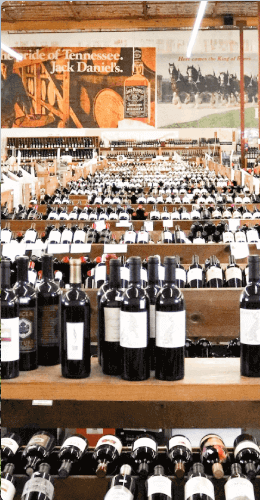The Robust World of Malbec Wine: Argentina vs. France

Malbec, a grape variety that increasingly captures the hearts of wine lovers worldwide, has become synonymous with Argentina and France. Each country offers its unique expression of this grape, resulting in distinct styles and flavors. Comparing Argentinian and French Malbec wines highlights this grape’s diverse potential, exploring specific appellations that showcase the best of this varietal and its ability to express a sense of place. Let’s start with Argentina. As Wines of Argentina points out, “In Argentina, seven out of ten bottles that are uncorked, are red. Of those seven, 60% are Malbec.”
Argentinian Malbec: A New World Marvel
Argentina has risen to fame as the world's leading producer of Malbec, and its wines have earned a reputation for their bold fruit flavors and approachability, which you can so easily sample when you buy wine online. The high-altitude vineyards in regions like Mendoza, Salta, and San Juan produce Malbec with unique characteristics.
Example Appellations: Mendoza
Mendoza, nestled in the foothills of the Andes Mountains, is undoubtedly the epicenter of Argentinian Malbec production. Here, Malbec vines thrive at altitudes of 2,000 to 3,000 feet, enjoying plenty of sunshine and cool nights. The result is wines with ripe fruit flavors, balanced acidity, and smooth tannins. Try the 2019 Catena Alta Malbec, a grand name in Mendoza winemaking.
Luján de Cuyo
Wines from Luján de Cuyo are celebrated for the concentration and structure in that red wine bottle. The soils here, rich in clay and limestone, impart minerality and complexity to the Malbec. Look for bottles from renowned producers like Catena Zapata and Achaval-Ferrer.
Salta: The High-Altitude Gem
The Salta region, particularly the Calchaquí Valley, boasts some of the highest vineyards in the world. At altitudes exceeding 6,000 feet, Malbec grapes experience intense sun exposure and dramatic temperature fluctuations, resulting in wines with vibrant acidity and remarkable freshness.
Cafayate
Malbec from Cafayate showcases bright red fruit flavors, floral notes, and a distinctive mineral edge. Bodegas Colomé and El Esteco are acclaimed wineries from this region.
French Malbec: A Tale of Tradition
Malbec's origins lie in France, specifically in the Cahors region of Southwest France. French Malbec tends to be more reserved, showcasing structure and age-worthiness. The key appellation in France is Cahors, and it features two styles of winemaking.
Cahors: The Birthplace of Malbec
Cahors, often referred to as the "Homeland of Malbec," has been cultivating this grape for centuries. Wines from Cahors are known for their deep color, robust tannins, and dark fruit flavors, often accompanied by earthy, savory, and even meaty notes. Cahors Malbec used to be sent to Bordeaux for blending, enhancing the richness of the resulting wine. Seek out wines from traditional producers like Château Lagrézette and Château du Cèdre for a classic Cahors experience. Another great example is the 2018 Chateau de Haute-Serre Malbec de Cahors. These wines are known for their depth, complexity, and the ability to age gracefully for decades.
Cahors: The New Wave of French Malbec
While Cahors has a rich French wine tradition, it has also seen a new wave of producers embracing modern techniques and international influences. This has led to a range of Malbec styles, from classic to more approachable. Look for wines from innovative winemakers like Fabien Jouves and Clos Troteligotte. Their wines offer a fresh perspective on Cahors, with a focus on fruit expression and accessibility.
Comparing Styles: Argentinian vs. French Malbec
Now that we've explored the key appellations in both countries, let's compare the styles of Argentinian and French Malbec.
Flavor Profile:
Argentinian Malbec: Known for its ripe, juicy berry flavors, with notes of plum, black cherry, and hints of chocolate and vanilla. These wines are often fruit-forward and approachable.
French Malbec (Cahors): Exhibits darker fruit notes of blackberry and blackcurrant, often accompanied by tobacco, leather, and earthy undertones. These wines tend to be more structured and age-worthy.
Tannins and Acidity:
Argentinian Malbec: Typically offers softer tannins and brighter acidity, resulting in a more immediate and easy-drinking wine.
French Malbec (Cahors): Features firmer tannins and higher acidity, making it suitable for aging and pairing with hearty dishes.
Age-Worthiness:
Argentinian Malbec: While some Argentinian Malbecs can age gracefully for a few years, they are generally best enjoyed in their youth to appreciate their fruitiness.
French Malbec (Cahors): Cahors Malbecs have a reputation for aging exceptionally well. The tannic structure and acidity allow them to evolve and improve over many years.
In all, the comparison between Argentinian and French Malbec reveals two distinct styles, each with its charm and character. The Argentina wine excels in approachability and immediate gratification, while French Malbec, particularly from Cahors, showcases the grape's traditional and age-worthy qualities. Exploring both styles offers wine enthusiasts a delightful journey through the diverse world of Malbec, demonstrating how one grape variety can produce such varied and captivating expressions in the hands of different winemakers and regions. Whether you prefer the sunny allure of Mendoza or the timeless elegance of Cahors, there's a Malbec style to suit every palate.


















Leave a comment